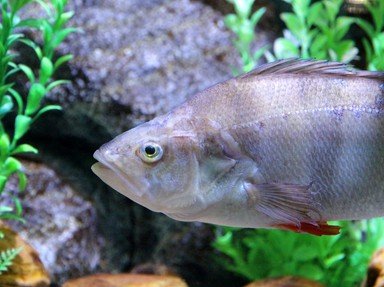Quiz Answer Key and Fun Facts
1. "Shelldwellers"-- the "desktop cichlids"-- are miniature cichlids that defend a small territory based on an empty snail shell in Africa's
2. Some fish colors are produced by pigment-bearing cells in the skin. But the interference patterns of light as it's refracted among closely-layered guanine crystals are responsible for fishes' butterfly-wing "structural colors" in shades of
3. The phrase "balanced aquarium" is about a hundred and fifty years old. It refers to the balance
4. The world's first public aquarium was opened in 1853, situated prominently in
5. The sensitive "feelers" of Pearl Gouramis and Three-Spot or Blue Gouramis, and of Dwarf Gouramis too, are actually highly developed
6. The Amazon is perhaps the world's oldest continuously-flowing river system, with the largest number of tropical fish species of any single watershed. Its sediment in the Atlantic Ocean is visible from space. Has it ever emptied into the Pacific?
7. If you maintained a separate "species" aquarium for each and every genuine species of fish scientifically described so far, both in freshwater and in the seas, how many tanks would you need?
8. Your plants are overrun with snails! You pick out all the large ones. Which fish will do the best job of finding all the little ones and eating them?
9. The closer you look, the more kinds of tiny worms you see in the aquarium, all less than half an inch long. Some glide along the glass. Others thrash in mid water. Still others work through the gravel. None of them is
10. Zebra Danios are one of our most familiar fishes. The heart of "Danio country" has been well-explored. But if you were to strike out around the unexplored edges, finding new Danio species, would you dip your net in the little rivers of
Source: Author
hawgshoes
This quiz was reviewed by FunTrivia editor
crisw before going online.
Any errors found in FunTrivia content are routinely corrected through our feedback system.

